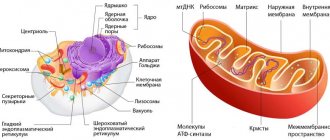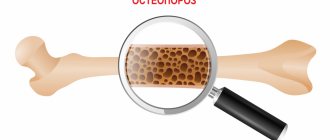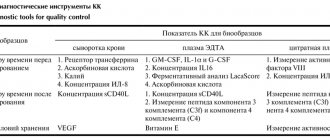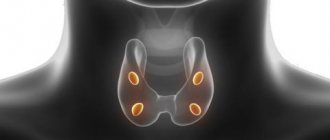A blood test for biochemistry is the most frequently prescribed test in gynecology, urology, endocrinology, oncology, dermatology and surgery. If you correctly decipher the information received, you can quickly diagnose diseases and metabolic disorders, even in cases where they do not give clear symptoms. It’s not for nothing that doctors call a biochemical blood test “truth serum.”
The cost of a comprehensive biochemical analysis is 1,510 rubles. The analysis includes determination of ALT, AST, glucose, serum creatinine (with determination of GFR), urea, total protein, total bilirubin, total cholesterol. CONSULTATION WITH DOCTORS ON THE RESULTS OF ULTRASOUND AND ANALYSIS - 500 rubles. (optional)
CLICK TO SIGN UP
To ensure that the analysis results are truly useful, we recommend that you read this article before going to the laboratory.
What is a biochemical analysis and why is it prescribed?
The content of the article
Biochemical blood testing is the most important diagnostic measure, which makes it possible to obtain an accurate assessment of lipid, protein and carbohydrate metabolism. These indicators are important for a huge number of pathologies and diseases, and therefore blood biochemistry is considered one of the basic tests of laboratory diagnostics.
The content of biochemical substances is assessed by their concentration, which is compared with normal values. If the concentration of a particular factor deviates from the norm, conclusions are drawn about the likelihood of a particular disease.
Data on nitrogen metabolic processes
A too slow metabolic process, fasting, polyuria or liver failure will be indicated by an underestimation of creatinine, urea, and uric acid in the blood. Normal blood biochemistry values increase the likelihood of problems with the diseases in question.
An overestimation of urea is also possible. If it is found during blood biochemistry, then arterial hypertension, poisoning or kidney disease will be suspected. Readings above normal for uric acid are a sign of poisoning, infectious diseases, skin pathologies, gout, leukemia or diabetes. One of the signs of abnormalities in kidney function is also high creatinine. The indicator also signals diabetes mellitus, muscular dystrophy or obstruction in the intestinal area.
Preparing for blood collection
A biochemical blood test, like any other, requires simple preparation. These measures must be taken very carefully, since any violation will affect the properties and composition of the blood. Conditions for accurate results:
- Have a low-fat dinner the night before donating blood, and do not drink coffee or strong tea. Immediately before donating blood in the morning, do not eat anything, you can only drink water.
- A day before the appointed date, refrain from visiting the bathhouse or sauna and do not overwork yourself.
- Donate blood for biochemistry before other procedures, if any have been prescribed (x-rays, injections, IVs, massage).
- To determine your sugar level most accurately, do not drink coffee in the morning or even brush your teeth.
- If you are taking medications that reduce lipid (fat) concentrations, you should stop taking them two weeks before the test, if possible.
- Limit the use of hormones, antibiotics, diuretics and other drugs for a while. The doctor referring you for the procedure will tell you for how long and which tablets will need to be postponed.
If a repeat examination is scheduled, take it in the same laboratory and at approximately the same time. Each laboratory uses its own methods and reagents, so results will vary between laboratories.
What indicators are most important in a biochemical blood test?
The diagnostic markers of a biochemical blood test are the following indicators:
- Blood glucose
. The most important test demonstrating the functionality and normal functioning of the endocrine system, liver and pancreas. This indicator is the main diagnostic parameter in identifying diabetes mellitus. - Total bilirubin
. This substance is a pigment that is formed as a result of the destruction of hemoglobin. This happens with the active destruction of red blood cells, with disruption of the liver (jaundice, cirrhosis), as well as as a result of disturbances in the outflow of bile. - Direct and indirect bilirubin. This indicator represents a separate fraction of the total bilirubin level and increases with disturbances of bile outflow, which is primarily characteristic of jaundice. The difference between the values of total bilirubin and the fraction of direct bilirubin is called an indirect indicator.
- AST (AST) and ALT (ALT)
- these indicators are enzymes, the main place of production of which is liver cells. That is why an increase in the concentration of these substances in the blood may indicate destructive processes in the liver, heart and other internal organs. - Gamma-GT
(gamma-glutamyltransferase) is an enzyme whose increased concentration indicates pathology of the liver or pancreas. Alkaline phosphatase is another enzymatic factor that is normally detected in the blood in small quantities. An increase in alkaline phosphatase levels indicates diseases of the liver and bone structures. - Total cholesterol
is an important indicator that demonstrates liver function and the patient’s nutritional pattern, since this substance enters the body with food. Low-density lipoproteins (LDL) are the most important characteristic that can early signal a high risk of the formation of atherosclerotic plaques in blood vessels. - Triglycerides
are one of the main characteristics of fat metabolism in the body. - Total protein
- demonstrates the overall level of protein components in the blood, and allows you to identify disorders in the liver and the presence of an infectious-inflammatory process.
Also, a biochemical blood test takes into account the level of albumin, potassium, sodium, chlorine, iron, creatinine, uric acid, urea and C-reactive protein.
What are antibodies? And how to decipher the results of the analysis?
Why do men and women need regular laboratory screening?
Because sometimes only a test can reveal a health problem. For example, the same infections can cause such different symptoms that it is not easy to suspect one pathogen. In men, pathogenic microorganisms may not manifest themselves at all, but for their wives they become very dangerous (a classic example is the human papillomavirus). Therefore, men and women need regular examinations, with different diagnostic approaches. The same applies to hormonal studies: both men and women are tested for testosterone, but the norms for this hormone differ by more than 10 times. And even classic basic studies: biochemical and general blood tests for men and women have their own nuances... A general blood test is the basis of any serious examination of the body’s condition. Therefore, a general (or clinical) blood test is prescribed for almost all complaints and diseases by doctors of all profiles. It is included in the examination standards for medical examinations, urgent and planned hospitalizations. Unlike the general one, a biochemical blood test makes it possible to assess the functions of specific human organs, as well as the presence and quantitative parameters of basic microelements and vitamins in the body. The general test standards for men and women are not the same; this also needs to be taken into account when interpreting. We provide test standards and a list of blood parameters in the order in which they are usually indicated on the laboratory test form.
Explanation: normal biochemical blood test indicators in the table
| Index | Norm |
| Albumin | 35-45 g/l |
| Total protein | 63-87 g/l |
| Globulins | 21.2-34.9 g/l |
| Creatinine | 44-97 µmol/l in women and 62-124 µmol/l in men |
| Urea | 2.5-8.3 mmol/l |
| Glucose | 3.5-6.2 mmol/l |
| Uric acid | 0.24-0.54 mmol/l in women and 0.12-0.43 mmol/l in men |
| LDL | up to 3 mmol/l |
| Total cholesterol | 3.3-5.8 mmol/l |
| HDL | from 1.2 mmol/l in women and 1 mmol/l in men |
| Direct bilirubin | 2.2-5.1 µmol/l |
| Total bilirubin | 8.49-20.58 µmol/l |
| Alkaline phosphatase (ALP) | up to 260 units/l |
| Triglycerides | up to 1.7 mmol/l |
| Alanine aminotransferase (ALT) | up to 38 units/l |
| Creatine kinase (CK) | up to 180 units/l |
| Aspartate aminotransferase (AST) | up to 42 units/l |
| Gamma glutamyl transferase (GGT) | up to 33.5 units/l in men and up to 48.6 units/l in women |
| A-amylase | up to 110 units/l |
| Sodium | 130-155 mmol/l |
| Potassium | 3.35-5.35 mmol/l |
ESR: blood normal
The main role of IgG antibodies is the long-term protection of the body from most bacteria and viruses - although their production occurs more slowly, the response to an antigenic stimulus remains more stable than that of IgM class antibodies.
ESR stands for erythrocyte sedimentation rate. Laboratory assistants measure this parameter when introducing certain reagents.
The norm for ESR in women is up to 15 mm/h. In men, the rate is lower - up to 10 mm/h. High levels indicate the presence of an inflammatory process in the body. Despite the fact that ESR is a nonspecific indicator, that is, it can indicate a whole range of diseases, it has remained an extremely popular and in-demand laboratory diagnostic method for several decades.
Concentration of protein and its fractions in a biochemical blood test
The role of protein (proteins) for the human body is invaluable. This is the main building material in the body, without which new cells, humoral immunity and transfer of substances do not occur. Typically, protein contains at least 20 amino acids; laboratory assistants also detect other elements - lipid residues, carbohydrates, vitamins and substances of inorganic origin (metals).
There are approximately 165 different types of proteins in the blood. The structure and functions of each are individual. However, all proteins can be divided into three groups: fibrinogen, globulins and albumins.
Biochemical analysis reveals two most important conditions:
- Hypoproteinemia
. When the amount of total protein decreases abnormally, we speak of hypoproteinemia. This phenomenon can occur due to poor nutrition (vegetarianism, protein-free diets), excessive blood loss, protein excretion in the urine due to kidney disease, burns, accumulation of large amounts of plasma in the abdomen, treatment with steroid drugs, impaired protein formation, and insufficient absorption of substances. - Hyperproteinemia
. Hyperproteinemia is an increase in the concentration of total protein in the blood. This phenomenon can be absolute and relative. An increase in protein levels due to the loss of the liquid component of blood plasma is considered relative. For example, with cholera and vomiting. An absolute increase in protein concentration is often observed in inflammation and multiple myeloma.
Amino acids and proteins
Protein often decreases during fasting or when following diets, but it can indicate a number of pathologies: chronic bleeding, problems with metabolic processes, anemia. Underestimated data is the norm during breastfeeding, during pregnancy (late pregnancy), for bedridden patients or in case of significant physical exertion.
The interpretation of the tests taken during blood biochemistry is considered carefully and normal values should not be exceeded. The protein is present in excessive amounts in individuals with autoimmune diseases, during infections, in cases of significant kidney pathologies or in the presence of malignant tumors.
Reduced levels of amino acids are a bad indicator, observed when there are problems in metabolic processes, often resulting in kidney or liver problems.
Disturbed pigment metabolism
In the human body there are specifically colored proteins. These are peptides that contain a metal (for example, copper or iron). Such peptides include cytochrome, hemoglobin, myoglobin, etc. As a result of the breakdown of peptides, bilirubin and its fractions are formed.
Free bilirubin appears after the breakdown of red blood cells in the spleen. This bilirubin is very toxic, especially to the human brain. However, the body is not poisoned due to the rapid connection of free bilirubin with albumin. In liver diseases such as cirrhosis and hepatitis, the concentration of bilirubin in the body increases due to a decrease in the amount of albumin and the predominance of glucuronic acid.
Indirect bilirubin binds to this acid, which loses its toxicity. It then enters the bile and is converted into urobilinogen. This enzyme, in turn, penetrates through the small intestine into the blood and then into the kidneys. It is urobilinogen that colors urine yellow.
Lipid profile, screening
Reference values
| Index | Normal values | ||
| Total cholesterol (TC) | Age < 5 years 5–10 years 10–15 years 15–18 years | Men 2.95–5.25 3.13–5.25 3.08–5.23 2.93–5.10 | Women 2.90–5.18 2.26–5.30 3.21–5.20 3.08–5.18 |
| Triglycerides (TG) | Age < 10 years 10–15 years 15–18 years | Men 0.34–1.13 0.36–1.41 0.45–1.81 | Women 0.40–1.24 0.42–1.48 0.40–1.53 |
| High-density lipoproteins (HDL, HDL-C) | Age 5–10 years 10–15 years 15–18 years | Men 0.98–1.94 0.96–1.91 0.78–1.63 | Women 0.93–1.89 0.96–1.81 0.91–1.91 |
| Low-density lipoproteins (LDL, LDL-C) |
| ||
| Age 5–10 years 10–15 years 15–18 years | Men 1.63–3.34 1.66–3.44 1.61–3.37 | Women 1.76–3.63 1.76–3.52 1.53–3.55 | |
| Very low density lipoproteins (VLDL, VLDL-C) | <0.8 mmol/l | ||
| Non-high-density lipoprotein (non-HDL) cholesterol | desired level < 3.8 mmol/l | ||
For people over 18 years of age, normal cholesterol levels are less than 5.0 mmol/L.
However, this number is arbitrary, since the doctor must take into account other indicators of the lipid spectrum (LDL and triglyceride levels will be important). Decoding indicators
The result of a lipid spectrum study should be interpreted depending on the purpose of the examination and the specific clinical situation, in conjunction with the data of a medical examination and the results of other studies.
Total cholesterol
– an indicator reflecting the totality of all cholesterol fractions circulating in the blood.
Cholesterol itself is insoluble in the blood. To transport cholesterol in the body, complex compounds are formed by binding to protein molecules. Such complexes are called lipoproteins
.
Depending on the particle size and their functions, high-density lipoproteins (HDL, HDL-C), low-density lipoproteins (LDL, LDL-C), very low-density lipoproteins (VLDL, VLDL-C), cholesterol not associated with high-density lipoproteins are isolated density (non-HDL), and a number of other substances.
Why is cholesterol needed in the body? Cholesterol is formed in the liver, intestines and skin, and also comes from food of animal origin. It is impossible to completely avoid consuming cholesterol in food for a number of reasons. Firstly, it is one of the main building materials for all cells. Secondly, cholesterol is actively involved in the formation of various hormones, including sex hormones. Cholesterol is also important for the digestion process - it is involved in the formation of bile in the liver. Cholesterol is a precursor to vitamins D, which, in particular, help strengthen bones.
High density lipoproteins (HDL)
- the only fraction of cholesterol that is called “good”, “healthy” cholesterol. HDL significantly reduces the risk of developing atherosclerosis. These molecules remove excess “bad” cholesterol from the body by transporting it from the tissues to the liver, where the cholesterol is converted into bile acids and then released into the intestines.
If the HDL result is below reference values, the risk of developing atherosclerosis and serious cardiovascular pathology increases significantly. Also, low levels of HDL can be observed in the following conditions: familial dyslipidemia, chronic liver diseases with symptoms of bile stagnation (cholestasis), chronic kidney disease, diabetes mellitus, obesity, long-term use of certain medications (beta blockers, diuretics, progestins, androgens). A diet rich in simple carbohydrates or saturated fatty acids also helps lower HDL levels.
Low-density lipoproteins (LDL)
are considered a “harmful”, “atherogenic” fraction of cholesterol, that is, they provoke the development of atherosclerosis. With this disease, the risk of developing life-threatening conditions such as stroke, acute myocardial infarction, coronary heart disease, and heart failure increases significantly.
A decrease in LDL cholesterol does not play a significant role in the diagnosis of diseases. A significant decrease in the level of LDL in the blood is possible with severe liver diseases, cancer, infections, burns, hyperthyroidism, and malnutrition.
Very low density lipoproteins (VLDL)
also belong to the “bad” fraction of cholesterol, since they serve as the main precursors of LDL. VLDL transports fats from the liver to body tissues and actively participates in the formation of atherosclerotic plaques. In people with diabetes, VLDL accelerates the development of atherosclerosis.
VLDL and LDL can increase in many diseases: obesity, diabetes mellitus, chronic kidney disease, hypothyroidism, chronic pancreatitis, systemic lupus erythematosus, hereditary disorders of fat metabolism, pregnancy, alcohol abuse.
A decrease in VLDL concentration has no diagnostic value.
Intermediate density lipoproteins (IDL)
– a transitional form between HDL and LDL, part of the group of atherogenic (“harmful”) cholesterol fraction. The study is used in conjunction with other lipid profile indicators to assess the risk of developing atherosclerosis.
Lipoprotein (a) (LP(a))
- a molecule similar to LDL, also classified as atherogenic and having a protein component. The study of Lp(a) is carried out when treatment for dyslipidemia is ineffective and is a genetic risk factor for the development of cardiovascular diseases, regardless of the level of other atherogenic fractions of cholesterol.
Cholesterol not bound to high-density lipoprotein
(non-HDL), is the sum of all atherogenic cholesterol fractions (LDL + VLDL + LDLP + LP(a)). This indicator allows for better control of treatment for mild to moderate increases in triglyceride levels, since in such a situation the measurement and calculation of LDL is less accurate.
Triglycerides
They are one of the main sources of energy in the body. They come from food and are formed in the intestines, liver and adipose tissue. With an excess intake of calories and a sedentary lifestyle, adipose tissue deposits triglycerides as an energy source.
Transport of triglycerides in the body is carried out using protein complexes, mainly in the form of very low density lipoproteins (VLDL).
An increase in the level of triglycerides in the blood plasma often occurs when the principles of a healthy diet are violated, with obesity, alcohol abuse, diabetes mellitus, various kidney diseases, and liver diseases. In rare cases, an increase in triglyceride levels may be a consequence of hereditary disorders of lipid metabolism (in such situations, the study results exceed the upper limit of values tens of times). Along with this, an increase in the concentration of triglycerides, like other types of fats in the blood, leads to an increased risk of developing cardiovascular diseases.
Reduced triglyceride levels are not significant in diagnosis. It is most often found in intestinal pathologies associated with malabsorption of nutrients, during a period of strict diet, fasting, and hyperthyroidism.
Atherogenic index
– the ratio of non-HDL cholesterol to HDL cholesterol. This indicator is calculated in a laboratory or by a doctor to assess the risk of cardiovascular disease. An increase in the atherogenic index indicates an increased risk of pathology.
For additional diagnosis of atherosclerotic changes and damage to internal organs, use:
- Biochemical blood test - indicators of liver function: total protein, albumin, alanine aminotransferase (ALAT), aspartate aminotransferase (AST), bilirubin and its fractions.
Why does jaundice appear?
There are several mechanisms for the occurrence of jaundice.
| Cause of jaundice | What's happening? |
| Increased breakdown of hemoglobin | Due to the too active production of indirect bilirubin, the liver simply cannot cope with its processing and excretion |
| Liver diseases | The amount of bilirubin produced does not exceed the norm, but the affected liver cells are not able to fully function and cope with their work |
| Impaired flow of bile | Instead of entering the intestines, bile accumulates in the liver and provokes its destruction. Bilirubin then enters the blood again. |
Jaundice is an indication for a biochemical blood test to determine the level of bilirubin in the blood. These indications also include liver tumors and cirrhosis, hepatitis, and hemolytic anemia.
Leukocyte formula: test norms
Leukocytes are white blood cells; they protect the body from viruses, bacteria, fungi, foreign agents and its own altered cells. Leukocytes come in several varieties: for example, monocytes are responsible for antifungal immunity (their increased level can also indicate infectious mononucleosis), neutrophils activate antibacterial immunity, and lymphocytes activate antiviral immunity.
The number of leukocytes is not as constant as, for example, the number of red blood cells. The level of white blood cells varies depending on the condition of the body, time of day, hormonal levels and other factors. It is best to take a test to determine the leukocyte formula in the morning on an empty stomach. You can only drink water before the test. At Lab4U you can take a general blood test with leukocyte count and ESR at any time convenient for you at the nearest medical center.
The quantitative and qualitative composition of lymphocytes allows a specialist to judge what the body is currently struggling with and suggest the dominant problem and the main cause of a particular condition. A general blood test may not contain a leukocyte formula, but if you want to find out the state of your immunity, it is better to do a general analysis with a leukocyte formula. As a rule, the blood standards for women and men in terms of the number of leukocytes are the same.
However, before the start of the menstrual cycle in women, the permissible norm of leukocytes increases by 2 times to 20 x 109/l - instead of the usual norm of 109/l.
An excess in the number of leukocytes indicates the presence of an inflammatory process in the body; its localization can be identified through a more detailed examination of the body. A decrease in the number of white blood cells in both men and women can be caused by autoimmune diseases - for example, systemic lupus erythematosus, rheumatoid arthritis, autoimmune thyroiditis, as well as malaria or salmonellosis.
Biochemical analysis and blood enzymes
Enzymes are proteins that help speed up chemical reactions in the body. The main enzymes are: ALP (alkaline phosphatase), ALT (alanine aminotransferase), CK (creatine kinase), GGT (gamma-glutamyltransferase) and AST (aspartate aminotransferase). They are found in large quantities in the pancreas, liver cells, heart, and muscles. There are few enzymes in the blood.
AST and ALT are involved in chemical reactions and are necessary for the transport of alanine and aspartate. These enzymes are found in muscle tissue, heart and liver. Elevated levels of ALT and AST in the blood are a sign of destruction of the cells of those organs in which an excess of the permissible norm was detected.
Reasons for increased AST and ALT:
- Myocardial infarction.
- Liver lesions.
- Hepatitis.
- Liver tumors and metastases.
- Destruction of skeletal muscles.
ALP is needed by the body as a way to deliver phosphorus to cells. Alkaline phosphatase can be bone or liver. The main reasons for increased levels of alkaline phosphatase in the blood:
- Cytomegalovirus;
- Hepatitis;
- Sarcoma;
- Metastases in the bones;
- Multiple myeloma;
- Liver damage from toxins;
- Osteoporosis;
- The healing process of bone fractures.
The purpose of GGT is, first of all, to participate in the transfer of cholesterol and fats into the cell. Most of all this enzyme is found in the kidneys, prostate gland, liver, and pancreas. The concentration of gamma-glutamyltransferase in the blood increases when:
- Diabetes mellitus;
- Alcohol poisoning;
- Liver diseases;
- Mononucleosis;
- Heart failure.
CC is aimed at maintaining energy metabolism in the cell at the required level. There are three types of creatine kinase:
- BB (location: brain);
- CF (heart muscle);
- MM (muscle tissue).
The level of CK in the blood increases due to destructive processes in these organs and tissues. This destruction occurs due to the following pathologies:
- Myasthenia;
- Gangrene;
- Encephalitis;
- Myorcarditis;
- Myositis;
- Amyotrophic sclerosis;
- Myocardial infarction;
- Treatment with prednisone;
- Schizophrenia;
- Sclerosis.
Platelets: general norms
Platelets are blood cells that participate in blood clotting processes and prevent extensive blood loss.
General norms of platelets in men and women suggest the content of these cells in the blood in an amount of two hundred to four hundred thousand per microliter.
A smaller number indicates insufficient blood clotting and can be caused by blood diseases. An increased platelet count can indicate a number of diseases - from autoimmune pathologies to tuberculosis, enteritis and colitis. A deviation from the normal platelet content in one direction or another requires further detailed examination of the blood coagulation system - a coagulogram.
| Analysis indicator | Norm | |
| Men | Women | |
| Hemoglobin | 130-170 g/l | 120-150 g/l |
| Red blood cells | 4.0-5.0 x 1012/l | 3.5-4.7 x 1012/l |
| Leukocytes | 4.0-9.0 x 109/l | |
| Hematocrit (the ratio of the volume of plasma and cellular elements of blood) | 42-50% | 38-47% |
| Average red blood cell volume | Within 86-98 µm3 | |
| Leukocyte formula | Neutrophils:
| |
| Platelet count | Within 180-320 x 109/l | |
| Erythrocyte sedimentation rate (ESR) | 3-10 mm/h | 5-15 mm/h |
Alpha amylase
This enzyme is special. It breaks down complex carbohydrates into simpler compounds. Alpha amylase is concentrated in the salivary glands and pancreas. When examining blood, the doctor will definitely pay attention to the decrease and increase in the level of this enzyme.
Alpha-amylase exceeds the normal level in hepatitis, pancreatic cancer, pancreatitis, mumps, and renal failure.
A decrease in the level of the enzyme is observed with alcoholism, myocardial infarction, toxicosis during pregnancy, thyrotoxicosis, pancreatic necrosis, and taking steroid drugs.
Blood electrolytes
The most important electrolytes are sodium and potassium. Despite their minimal amount in the body, these substances are involved in almost all human processes and organs. Potassium is a kind of conductor of electrical impulses to the heart. Therefore, even minor changes in potassium levels negatively affect myocardial function. Hyperkalemia is an increase in potassium levels, and hypokalemia is a decrease.
- An upward deviation in the amount of potassium is fraught with arrhythmia, clouding of consciousness, slow heartbeat, and decreased blood pressure. This can happen when the indicator increases to 7.15 mmol/l.
- If the potassium level, on the contrary, falls below 3.05 mmol/l, then vomiting and nausea, difficulty breathing, cardiac and muscle weakness are likely to occur.
Sodium does not play any special role in the metabolic process. It is found in large quantities in extracellular fluid. Sodium has the function of controlling pH and osmotic pressure. The process of sodium production itself is controlled by aldosterone, a hormone of the adrenal cortex. Sodium is excreted in the urine.
The state of hyponatremia (low sodium level) leads to apathy, nausea and vomiting, refusal to eat, drowsiness, weakness, convulsions, and coma.
Hypernatremia (high sodium levels) causes seizures, irritability, muscle tremors, and twitching.
To summarize, I would like to note that each laboratory has its own research equipment and a set of reagents. Therefore, indicators may vary between institutions. Be careful when receiving the test result. It is important that the form contains information about the acceptable standards for all parameters of a biochemical blood test. Only in this case is it possible to interpret the data obtained correctly and identify possible deviations from the norm.
What do deviations from the norm indicate?
Quite often it is necessary to take a test such as blood biochemistry, so for many it is important to decipher the data obtained and normal indicators for comparison with those obtained in the laboratory. At the same time, the presence of any deviations does not indicate the fact of certain health problems, so it is worth finding out all the nuances from the doctor. The numbers are considered in aggregate and separately; they can only indirectly indicate the presence of possible diseases or deviations from the ideal state. We suggest studying normal blood biochemistry indicators, the reasons for underestimated or excessively high data in women or men.








